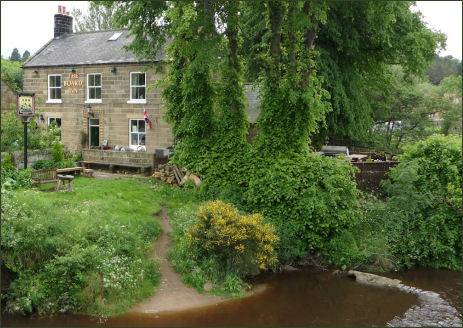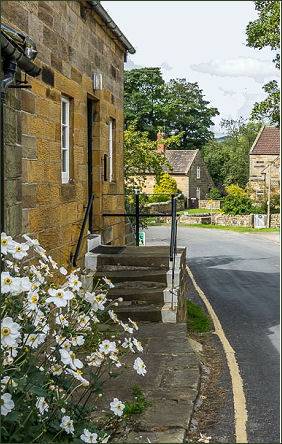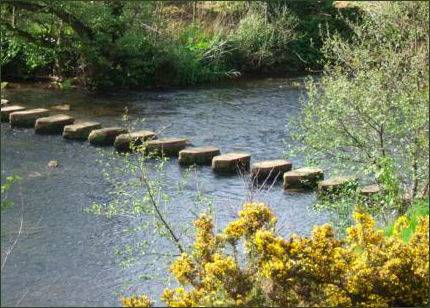Lealholm
OS grid reference:- NZ 762 076

 Lealholm, in the beautiful North York Moors National Park, was once described as 'the prettiest village in Yorkshire' by the Sunday Times. The village is situated at a crossing point of the River Esk, in Eskdale and lies around 5 miles (15.3 km) from the seaside town of Whitby
Lealholm, in the beautiful North York Moors National Park, was once described as 'the prettiest village in Yorkshire' by the Sunday Times. The village is situated at a crossing point of the River Esk, in Eskdale and lies around 5 miles (15.3 km) from the seaside town of Whitby
The name is thought to derive from the Old English word 'lael' meaning a willow twig or withy and holm which meant a settlement, thus the settlement by or near the willow trees.
An important crossing point of the River Esk, this village became an early settlement and has a history dating back to the thirteenth century. At the time of the Domesday survey, the site of the current village was heavily wooded, but with five charcoal-hungry iron smelting furnaces operating at the manor by 1274 A.D, the valley floor was cleared quickly of trees enabling drainage, cultivation and settlement of the land.
Lealholm was home to at least one mill for centuries, and earliest records reveal a water mill located within the village in 1336 belonging to the Lord of the Manor, William le Latimer, 3rd Baron of Danby.
At the head of the village stands the woodland and steep sided ravine of Crunkly Ghyll, which was carved by the River Esk during the last great ice age.
The main village of Lealholm is situated at the bottom of Crunkly Ghyll. The River Esk curves through the village. In the centre stands the seventeenth century bridge which crosses the Esk a few yards from an old fording point. Around 400 yards (370 m) further upstream lies a set of stepping stones (pictured below right).
Typical of the area are the medieval cruck-built longhouses of Lealholm. These were constructed as single storey limestone structures. Originally they had heather thatched roofs, but these were mostly replaced in the nineteenth century with slate or pantiles.
 The village has a selection of amenities, including a village shop, post office, a bakery, a pub, a petrol station and farm goods store. It also has the Forge Art Gallery, the Shepherd's Hall cafe, a cricket and football pitch. The Shepherds Hall restaurant has a carved inscription dated 1873 reading Loyal Order of Ancient Shepherds.
The village has a selection of amenities, including a village shop, post office, a bakery, a pub, a petrol station and farm goods store. It also has the Forge Art Gallery, the Shepherd's Hall cafe, a cricket and football pitch. The Shepherds Hall restaurant has a carved inscription dated 1873 reading Loyal Order of Ancient Shepherds.
There are three churches in the village, the Roman Catholic church of Our Lady of the Sacred Heart, the Church of England church of St James the Greater, and a Methodist Chapel. Close to the chapel, between the River Esk and the mill race stands a Quaker Friends Burial Ground.
The Board Inn (above right) at Lealholm is an eighteenth century coaching inn beside the bridge, the pub serves home cooked food and offers bed and breakfast accommodation, opposite is the village green where quoits are regularly played. There are a number of other bed and breakfast establishments and self-catering accommodation in the village.
John Castillo (1792-1845), poet and lay preacher, often referred to as "The Bard of the Dales", lived in Lealholm on the site now known as Poets Cottage, which today operates as a plant nursery.
The Lealholm Show, is an annual event held on the first Saturday in September. It is a farm produce, horticultural and agricultural show.
